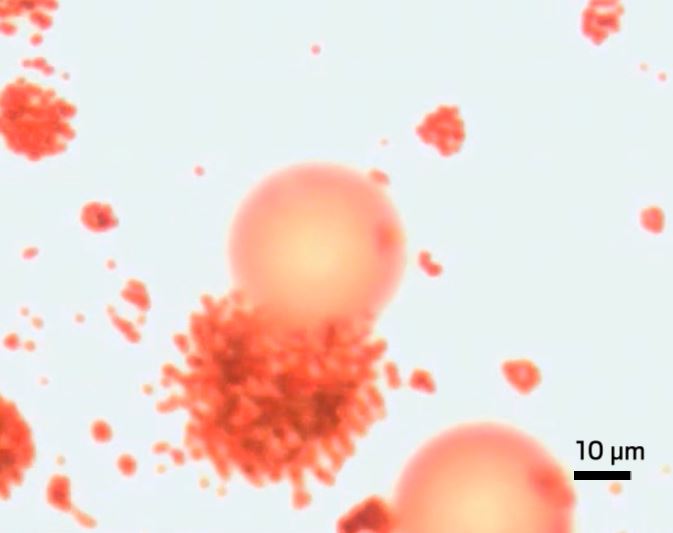
Magnetic Particle Spectroscopy for Detection of Influenza A Virus Subtype H1N1
April 06, 2020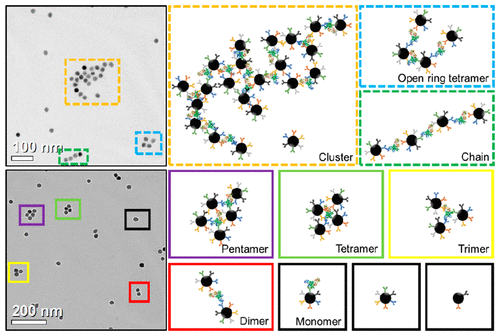 Magnetic nanoparticles (MNPs) with proper surface functionalization have been extensively applied as labels for magnetic immunoassays, carriers for controlled drug/gene delivery, tracers and contrasts for magnetic imaging, etc. Kai Wu and Jian-Ping Wang et al. introduced a new biosensing scheme based on magnetic particle spectroscopy (MPS) and the self-assembly of MNPs to quantitatively detect H1N1 nucleoprotein molecules. MPS monitors the harmonics of oscillating MNPs as a metric for the freedom of rotational process, thus indicating the bound states of MNPs. These harmonics can be readily collected from nanogram quantities of iron oxide nanoparticles within 10 s. The H1N1 nucleoprotein molecule hosts multiple different epitopes that forms binding sites for many IgG polyclonal antibodies. Anchoring IgG polyclonal antibodies onto MNPs triggers the cross-linking between MNPs and H1N1 nucleoprotein molecules, thereby forming MNP self-assemblies. Using MPS and the selfassembly of MNPs, they were able to detect as low as 44 nM (4.4 pmole) H1N1 nucleoprotein. In addition, the morphologies and the hydrodynamic sizes of the MNP self-assemblies are characterized to verify the MPS results. Different MNP self-assembly models such as classical cluster, open ring tetramer, and chain model as well as multimers (from dimer to pentamer) are proposed and form a new biosensing scheme for detecting ultralow concentrations of target biomolecules as a rapid, sensitive, and wash-free magnetic immunoassays. Check out more details in ACS Applied Materials & Interfaces.
Magnetic nanoparticles (MNPs) with proper surface functionalization have been extensively applied as labels for magnetic immunoassays, carriers for controlled drug/gene delivery, tracers and contrasts for magnetic imaging, etc. Kai Wu and Jian-Ping Wang et al. introduced a new biosensing scheme based on magnetic particle spectroscopy (MPS) and the self-assembly of MNPs to quantitatively detect H1N1 nucleoprotein molecules. MPS monitors the harmonics of oscillating MNPs as a metric for the freedom of rotational process, thus indicating the bound states of MNPs. These harmonics can be readily collected from nanogram quantities of iron oxide nanoparticles within 10 s. The H1N1 nucleoprotein molecule hosts multiple different epitopes that forms binding sites for many IgG polyclonal antibodies. Anchoring IgG polyclonal antibodies onto MNPs triggers the cross-linking between MNPs and H1N1 nucleoprotein molecules, thereby forming MNP self-assemblies. Using MPS and the selfassembly of MNPs, they were able to detect as low as 44 nM (4.4 pmole) H1N1 nucleoprotein. In addition, the morphologies and the hydrodynamic sizes of the MNP self-assemblies are characterized to verify the MPS results. Different MNP self-assembly models such as classical cluster, open ring tetramer, and chain model as well as multimers (from dimer to pentamer) are proposed and form a new biosensing scheme for detecting ultralow concentrations of target biomolecules as a rapid, sensitive, and wash-free magnetic immunoassays. Check out more details in ACS Applied Materials & Interfaces.
Astrophysicist Gets Magnets Stuck Up Nose While Inventing Coronavirus Device
March 30, 2020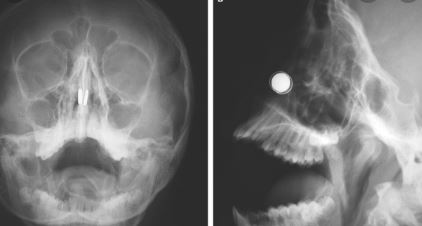
Dr Daniel Reardon, a research fellow at a Melbourne university, was building a necklace that sounds an alarm on facial contact, when the mishap occurred on Thursday night.
The 27 year-old astrophysicist, who studies pulsars and gravitational waves, said he was trying to liven up the boredom of self-isolation with the four powerful neodymium magnets.
“I have some electronic equipment but really no experience or expertise in building circuits or things,” he told Guardian Australia.
To read this article in its entirely, go on here.
3D Patterning of Cells in Magnetic Scaffolds for Tissue Engineering
February 26, 2020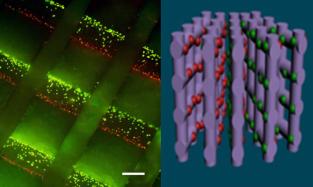 Valentin Dediu et al. have realized a 3D magnetic patterning of two cell types in vitro inside an additive manufactured magnetic scaffold, as a conceptual precursor for the preparation of vascularised tissue. Nonhomogeneous magnetic gradients and loading magnetic configuration allowed for precise guiding of cells in a scaffold due to short range magnetic forces. The mathematical modelling confirmed the strong enhancement of the magnetic gradients and their particular geometrical distribution near the fibres, defining the preferential cell positioning on the micro-scale. Their method looks very promising in terms of assembling cellular constructs in a way that mimics physiological arrangements in vivo.
Valentin Dediu et al. have realized a 3D magnetic patterning of two cell types in vitro inside an additive manufactured magnetic scaffold, as a conceptual precursor for the preparation of vascularised tissue. Nonhomogeneous magnetic gradients and loading magnetic configuration allowed for precise guiding of cells in a scaffold due to short range magnetic forces. The mathematical modelling confirmed the strong enhancement of the magnetic gradients and their particular geometrical distribution near the fibres, defining the preferential cell positioning on the micro-scale. Their method looks very promising in terms of assembling cellular constructs in a way that mimics physiological arrangements in vivo.
Check the paper which was published in Scientific Reports out here.
Special Issue "Magnetic Nanoparticles" in the Journal "Magnetochemistry"
January 18, 2020
The special issue is edited by Prof. Evgeny Katz (Department of Chemistry and Biomolecular Science, Clarkson University, Potsdam, NY, USA). Among the reviews there is one written by Vlad Socoliuc, Ladislau Vekas and Etelka Tombacz with colleagues from Genova, Dubna, Szeged, Cluj and Timisoara. A very good read for both beginners and more experienced magnetic nanoparticle researchers. It looks at the usefulness of magnetic nanoparticles for nanomedicine from a materials science perspective. Check it out here.
Best Practices for Characterization of Magnetic Nanoparticles for Biomedical Applications
January 13, 2020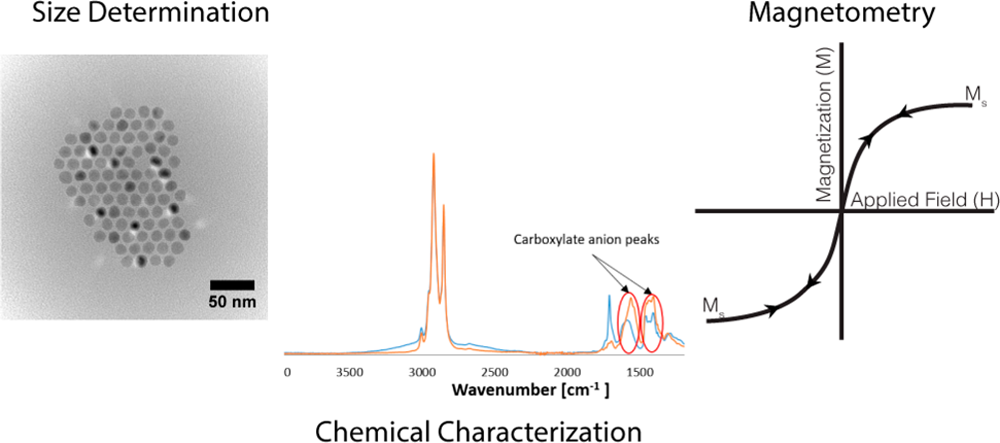 The use of magnetic nanoparticles in biomedical applications provides are a wealth of opportunities. Nonetheless, to truly understand the interactions of these materials in biological media, detailed characterization is necessary with these complex systems. Sarah Sandler and Ben Fellows in Thompson Mefford's lab highlight in a recent paper some “best practices” in the analytical techniques and challenges in the measurement of the properties of these materials.
The use of magnetic nanoparticles in biomedical applications provides are a wealth of opportunities. Nonetheless, to truly understand the interactions of these materials in biological media, detailed characterization is necessary with these complex systems. Sarah Sandler and Ben Fellows in Thompson Mefford's lab highlight in a recent paper some “best practices” in the analytical techniques and challenges in the measurement of the properties of these materials.
Check it out - you might actually change of few things in your lab after reading this! This ACS Analytical Chemistry paper is available here.
2019 ERC Consolidator Grants Disclosed
January 01, 2020
MALETINSKY Patrick
University of Basel (CH)
QS2DM: Quantum sensing of two-dimensional magnets
CERUTTI Benoit
National Center for Scientific Research - CNRS (FR)
SPAWN: Simulating particle acceleration within black hole magnetospheres
JACQUES Vincent
National Center for Scientific Research - CNRS
EXAFONIS: Exploring antiferromagnetic order at the nanoscale with a single spin microscope
Swarm Power: Magnetic Microrobot Swarms
December 27, 2019ver since Richard Feynman’s famous 1959 speech, “There’s Plenty of Room at the Bottom,” scientists have considered what it would take to build a swallowable surgeon—one small enough to travel through our blood vessels and controlled enough to perform procedures at precise spots in the body.
They’ve made progress toward Feynman’s vision, to be sure: During the early 2000s, researchers designed individual catalytic micromotors that could propel themselves through liquid by creating gas bubbles from chemical fuels. And by 2009, a team at the Swiss Federal Institute of Technology (ETH), Zurich, had created a helical bot that was recognized by Guinness World Records as the “most advanced mini robot for medical use.” The tiny swimmer, about 20 μm long, made from semiconductor materials and controlled by a magnetic field, was designed to mimic the swirling flagella that bacteria use to move around (Appl. Phys. Lett. 2009, DOI: 10.1063/1.3079655).
Still, there’s a big difference between being the most advanced bot of the day and performing surgery as Feynman envisioned. Scientists are realizing that even the most sophisticated single swallowable surgeon won’t be sufficient to achieve that goal. Instead, they’re coming around to the idea that there is power in numbers.
As Metin Sitti, a microrobot expert at the Max Planck Institute for Intelligent Systems, sees it: “Swarming is indispensable for the translation of microrobots into the clinic.”
In our community, we have seen many of these systems before. Check out a recent update about this field here in a C&EN article by Cici Zhang. In that article, there are also a few interesting videos of how the "microrobots" behave in a magnetic field.
Researchers Create Material That Uses Magnetic Fields to Transform
December 11, 2019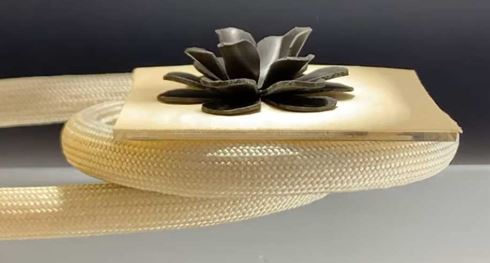
The new material was created using a mixture of three ingredients: NdFeB and magnetite particles, as well as the acrylate-based shape-memory polymer that helps to lock various shapes into place.
The resulting material is the first that combines all of the strengths of the individual components into a single system. The system is capable of rapid and reprogrammable shape changes that are lockable and reversible. The researchers started making the material by distributing particles of neodymium iron boron and iron oxide into a mixture of shape memory polymers. When the particles were fully incorporated, the researchers molded the mixture into various objects designed to evaluate how the material performed in a series of applications.
The team created a gripper claw from a t-shaped mold of the polymer mixture. Applying a high-frequency, oscillating magnetic field caused the iron oxide particles to heat up and warm the entire gripper. That temperature rise caused the polymer to soften and become pliable. A second field then caused the gripper claws to open and close. Check out the movie here.
For more information, check out our Archives.
September 2017
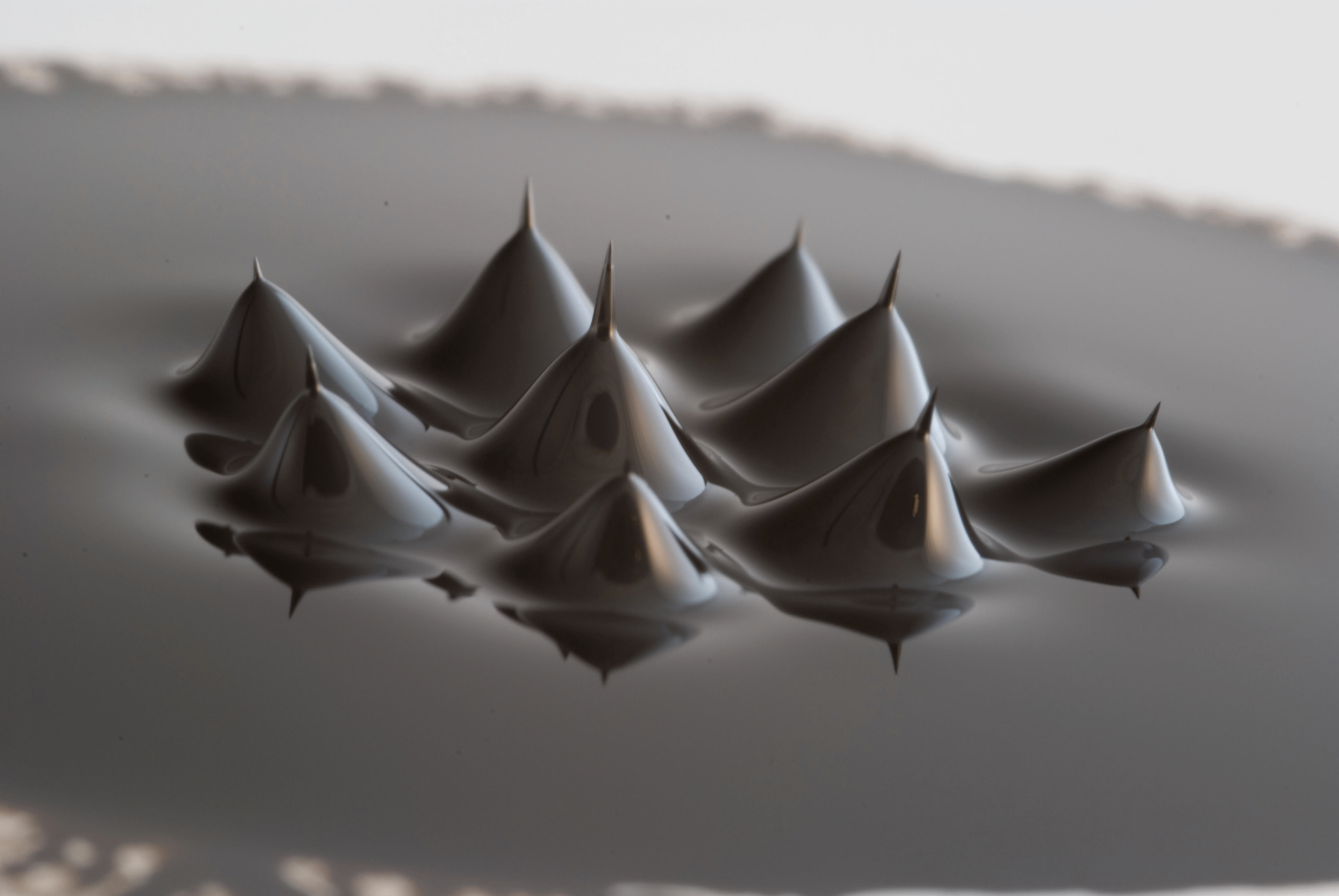
Search this site with the power of

